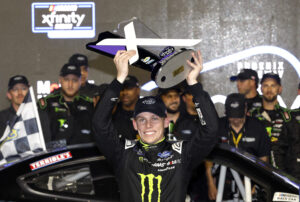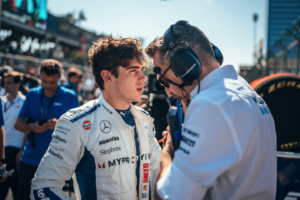The first run was still green, and I already knew what I’d write; the high-downforce package. That’s how little of anything happened, Sunday.
When the competition caution flew on Lap 26, Chase Elliott was over three seconds ahead of Kyle Busch in second.
As we’ve seen time and time and time and time again, the wake from the lead car drowns out the pursuing car and makes passing a Herculean task. Except for three, the only times the leader was passed in this race was on pit road and on a restart.
This trend repeated throughout the race.
For example: On the Lap 31 restart, Joey Logano pushed Denny Hamlin to the lead. After a few laps, Hamlin pulled away from the field. He finished the stage two seconds ahead of Logano.
Even when Elliott got stuck in lap traffic and Hamlin pulled up to him, he couldn’t overtake him.
And the inverse happened, prior to a caution for debris on Lap 190.
The only real intrigue came from the possibility of a fuel-mileage race to the finish. Though that died when Kyle Busch and Kevin Harvick triggered a rush to pit road with 36 laps to go.
Well at least NASCAR came to its senses and did away with the high-downforce package for 2021.
Oh wait, that didn’t happen!
At the time this column was published, NASCAR’s shown no indication that this package won’t carry over to 2021.
I’m running out of ways to say this package sucks. As I noted above, this isn’t the first time I’ve written this. Hell, I lampshaded it in the headline.
Frankly, I’m tired of NASCAR venturing down the path of placing more emphasis on entertainment than the sport aspect of its auto racing competition.
And as much as the big wigs in Daytona pretend otherwise, this package doesn’t create good competition.
I don’t want to, either. I’d rather discuss Kurt Busch earning his first NASCAR Cup Series victory of the season.
But as long as NASCAR keeps its head in the sand, nothing will change.
That’s my view, for what it’s worth.






